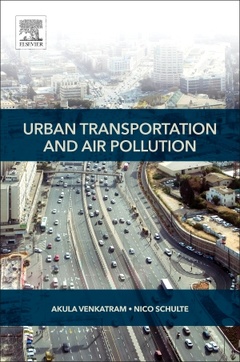Description
Urban Transportation and Air Pollution
Authors: Venkatram Akula, Schulte Nico
Language: English
Subjects for Urban Transportation and Air Pollution:
188 p. · 15x22.8 cm · Paperback
Description
/li>Contents
/li>Readership
/li>Biography
/li>Comment
/li>
Urban Transportation and Air Pollution synthesizes state-of-the-art methods on estimating near-road concentrations of roadway emissions. The book provides the information needed to make estimates using methods based on a minimal set of model inputs that can be applied by a wide range of users in many situations. Discussions include methods to estimate traffic emission under numerous urban driving conditions, the uncertainty of emission models, and the effects of road configurations, such as near-road solid barriers. Final sections present dispersion models that link traffic emissions with near road concentrations in urban environments.
Addressing transportation-related environmental issues is extremely important as urban areas are constantly searching for ways to mitigate impacts from transportation sources. This book helps to explain dispersion models, a critical tool for estimating the impact of roadway emissions in cities.
1. Introduction2. Micrometeorology and Dispersion3. Traffic Emissions4. Highways and Urban Air Quality5. Buildings and Urban Air Quality6. Dispersion Model Inputs7. Conclusion
1) Academic researchers in Transportation and Environmental Studies, 2) Transportation practitioners such as transportation managers and city planners. 3) Urban and Transportation public officials, such as city managers, transportation planners, policy directors, and research managers.
Nico Schulte, PhD, is an Air Pollution Specialist in the Research Division of the California Air Resources Board. He has written on modeling dispersion of road emissions and the impact of near-road solid barriers and urban buildings on ground-level pollutants.
- Compiles and synthesizes the state-of-the-science methods for estimating roadway emissions
- Demonstrates, with clear examples, how modeling methods reduce uncertainties in real-world problems
- Emphasizes how local-scale, semi-empirical, steady-state modeling can be applied using only a small set of inputs
- Offers an overview of the meteorology that governs air pollution dispersion in cities
These books may interest you

Traffic-Related Air Pollution 122.46 €



